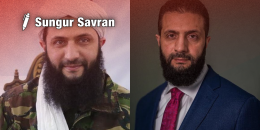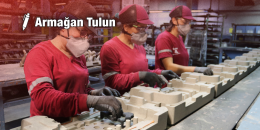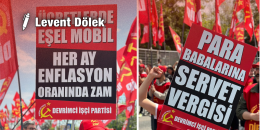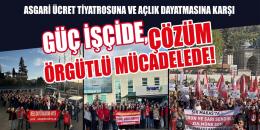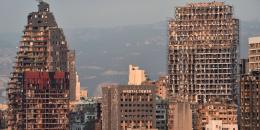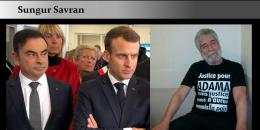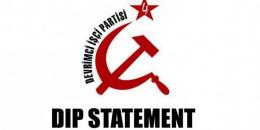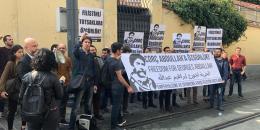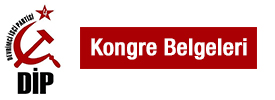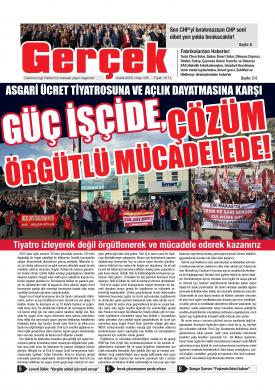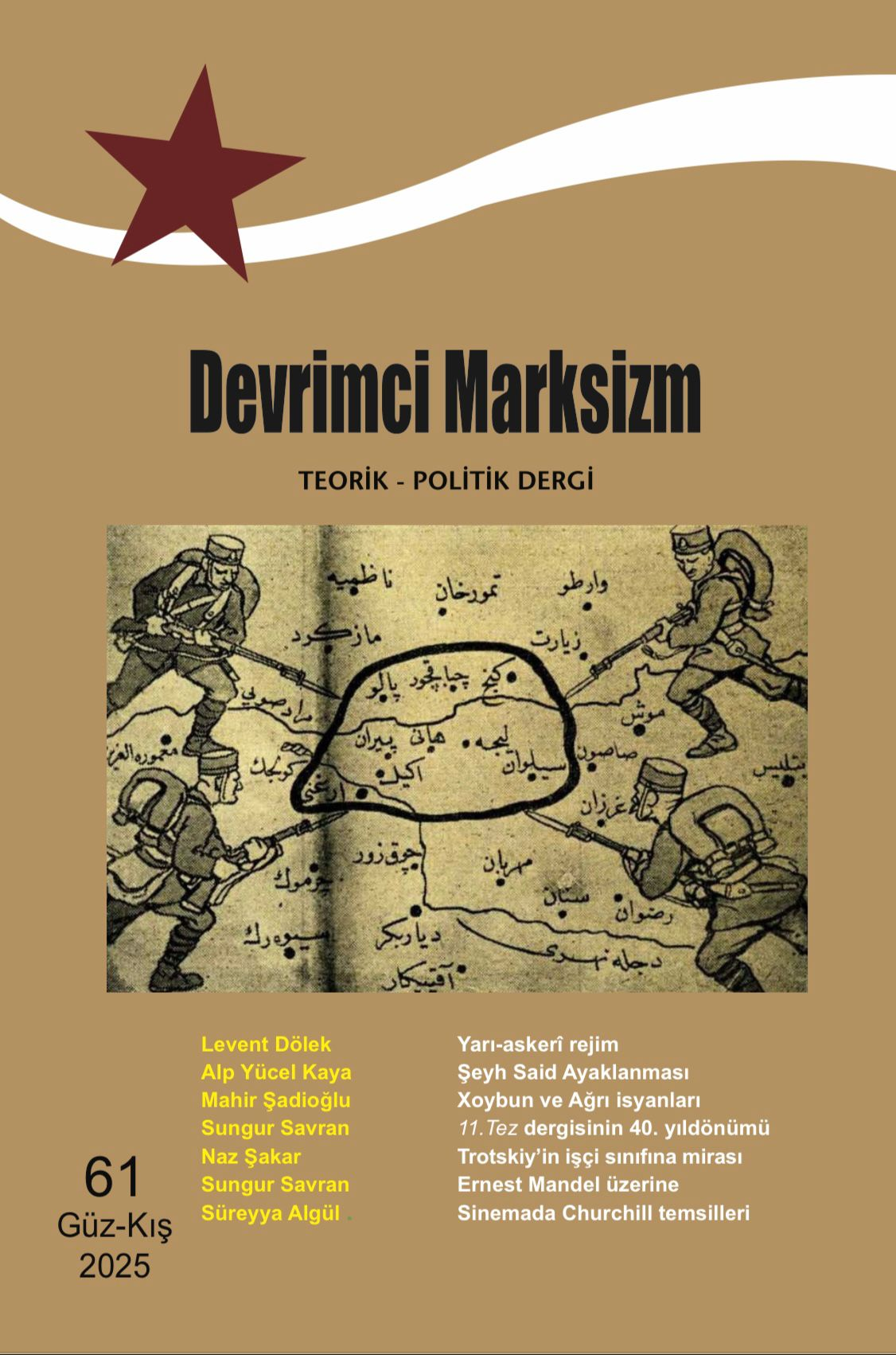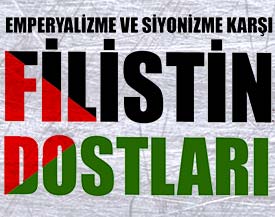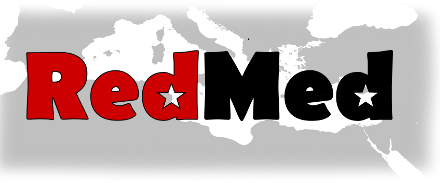The peculiarities of Lebanon’s October revolution
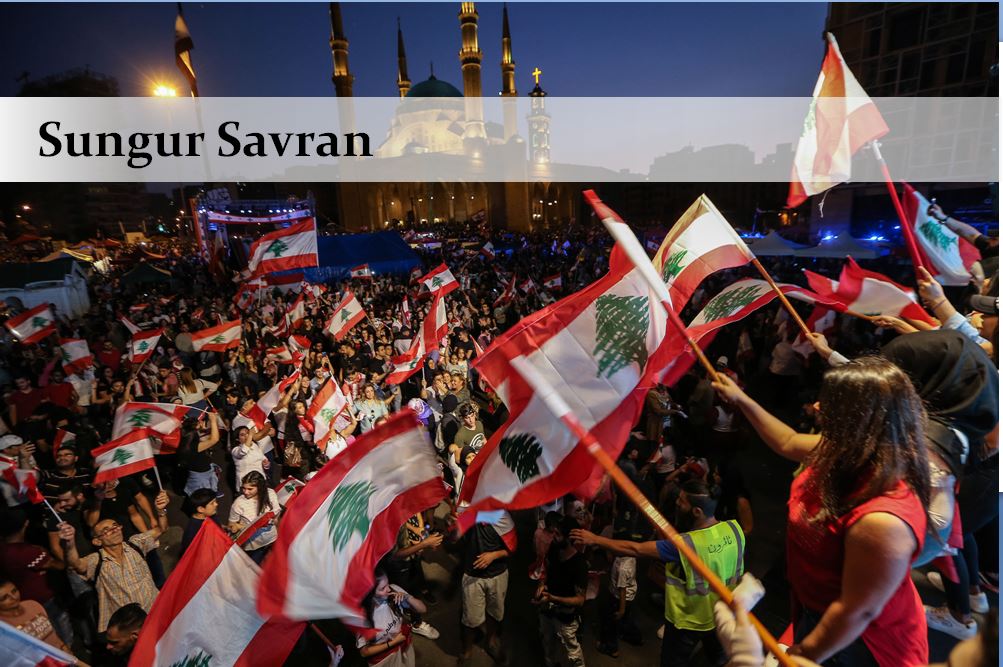
On 17th October Lebanon erupted. 2 million people have since come out in cities and towns across this country of 7 million. People from all walks of life, except the crême de la crême, have since staged demonstrations, blocked roads, occupied Martyrs’ square in Beirut and other public spaces, marched to ministries, the Central Bank, and other agencies they hold responsible for the plight of the country, and waged strikes by workers in different industries. For a period of two whole weeks all public schools and universities were shut down, with children and teenagers of all ages, from elementary school pupils all the way up to university students, joining the demonstrations. Lebanese University, the biggest public university, was a major centre of agitation, especially its main campus in Hadath. Schools then opened, but students have kept up their political activity.
People not only of all walks of life and ages, but also of all faiths participated in the demonstrations, extremely significant in a country divided very consciously by its ruling classes according to religion and denomination (of which more below). Not only Beirut and Tripoli, the capital city and the second largest city, a port city on the Mediterranean, but many others, including Saida, Nabatiyeh, as well as Tyre and Sur in the Shiite dominated south staged demonstrations, as well as neighbourhoods, most of them poor, outside the capital. Notably, some of the Palestinian (officially half a million) and Syrian (1.5 million) refugees also participated, without fear of being discriminated against as is usually their lot in ordinary daily life. In short, Lebanon was gripped by a fever of rebellion that brought out representatives of almost all groups except the bourgeoisie and the political establishment.
Killon yani killon!
This is the outpouring the rage of a population sick of every aspect of life in a country where there is almost nothing that has not gone wrong for decades now. A graphic example of what we mean by this is the so-called “garbage crisis” of 2015, when the people rose in protest against the problems caused by the collection of trash. We are face to face with a ruling class that cannot even clean up after dirtying the living spaces of the people! That crisis has been characterised by many as one of “a mafia to generate money for the political class” (Michael Young interview to Al Jumhuriya, https://www.aljumhuriya.net/en/content/return-martyrs-square-interview-michael-young).
What has been happening since 17th October is not simply a people’s rebellion. The people themselves call this a revolution. The word “thawra” is constantly in the air and the symbol of the uprising is a column raised in the middle of Martyrs’ square in Beirut, displaying a fist that stands for the will of the “thawra”
This is not Yemen or Somalia. We are talking of a country that has acted as the banking hub of the Arab Middle East for decades. Despite the scars of a civil war that terrorised the country between 1975 and 1990, Beirut is still one of the most modern and sophisticated urban centres of the Arab world. And yet precisely because the Lebanese capitalist class has hung on to its advantages in the banking industry in an age of petro-dollars when the City of London and Borsa Istanbul, as well as others, are vying for the wealth of the kings and emirs, the country has been steered towards a path of capitalist development where almost everything from food to medicine has to be imported from the outside. And now that as a result of the deep financial problems faced by banking all around the world this industry is in dire straits, Lebanon is facing a crisis that has left the country bleeding. The banks have now limited the amount of money that can be withdrawn by depositors, the Central Bank has not taken any serious measures to overcome the crisis, and there is a serious threat of a bank run, which can bring down the entire economic structure of the country to a grinding halt. The people of Lebanon are sick and tired of a system that is simply not functioning.
And so they are not simply protesting this or that aspect of life. Nor have they picked upon this politician or that. They want all of them to go. They are adamantly saying “killon yani killon”, “all of them means all of them” in Arabic. They have questioned and opposed even the very sacred constitutional structure of the country based on a kind of faith segregation, based on the Ta’if accords of 1989 that ended the civil war, calling for its abolition and replacement by a universalist system. This is not a rebellion, but a revolution that questions the very heart of the political and economic system ruling Lebanon.
One aspect of the struggle sheds immense light on what we mean. One of the major targets of the masses is the elimination of the corruption rampant within the political establishment, indissociably tied to the faith-based political system of the country. In the midst of the uprising, the Lebanese parliament brought a draft law on its agenda that stipulated an amnesty for suspected infraction of corruption laws. A most brazen defence of crooks, entirely comprehensible when one remembers that parliament has been elected on confessional bases and most members have a stake in defending the system! And what did the people do? They encircled the parliament building in order to prevent members of parliament from going in. They succeeded for days and the law could not be passed. This is a de facto people’s control over the political system, a measure that resembles distantly the measure of workers’ control that Marxists have called for in countering the economic power of capitalists over enterprises, a measure which, if correctly and fully implemented, will create a situation of dual power at the level of the single enterprise between the capitalist and the proletariat. So this struggle waged by the Lebanese mass movement signifies, in action, the birth of a dual power in very embryonic form.
However, we must stress the dire limitations of this revolutionary crisis. The revolution is almost entirely spontaneous. Except for the Lebanese Communist Party from among the sizeable parties, all the representatives of the political system in place are targeted by the masses. The masses do not look towards a leadership that has a cogent programme that would offer them a political solution to their tribulations. In the absence of such a leadership, the political solutions that have been advanced have been naïve at best: a new technocratic independent government, new parliamentary elections, an independent judiciary, and a hardly crystallised demand for the abolition of the faith-based constitutional system. The social and economic demands are, on the contrary, very radical: The walls of Beirut and Tripoli are filled with anti-capitalist slogans, banks are an oft-denigrated target of the mass movement, gender-based demands are constantly reiterated, an atmosphere of universalist fraternity is in the air, but the political solutions that gather some popularity are wholly inadequate for the purposes of such demands with revolutionary potential.
This is nothing peculiar to Lebanon. From Iraq to Haiti and from Iran to Chile the socio-economic imagination of the masses in revolt has advanced light years ahead the political solutions the same rebellions offer. This is the result of the fundamental contradiction of the revolutions of our time: revolutionary masses without a credible revolutionary leadership.
This political limitation is accompanied by an ideological backwardness that haunts the demonstrations, at least in big cities. The rage of the crowds is so raw and instinctual and so little polished by political education that constant recourse to curse words are the affliction of the squares. In their chronicle of the events (https://www.jadaliyya.com/Details/40115/Ongoing-Post-on-Protests-in-BeirutLebanon?mc_cid=2fe2c43244&mc_eid=297d54135e) Jadaliyya writers report that “a mass of people [were] chanting all day about fucking so and so's mothers and sisters.” Left-wing forces had to intervene in order to counter with slogans such as “fag is not an insult”, “my pussy is not an insult”, or even “female is not an insult”. This was also the case in the Istanbul leg of the people’s rebellion in 2013 in Turkey. Because the events in Istanbul were dominated largely by a youth that had remained totally apolitical up until that moment, cursing all authority seemed to them to be the most radical political act. And quite naturally in our sexist society a lot was said that offended women and gays. So many forces, starting with the feminist movement, had to intervene to stop this kind of purely macho language parading as radical politics. It is important to note in passing, though, that the scourge of rapes and harassments so rampant in Tahrir square in Cairo during the first generation of the Arab revolution has been absent from all of the revolutions that belong to the second generation unfolding at present (Sudan, Algeria, Iraq, and Lebanon).
The regime is temporising
What has the response of the political establishment been to the uprising? It is important to note that the uprising is still going strong. At the time of writing, Sunday 8th December, L’Orient le Jour, the French-language daily of Lebanon, was reporting “a Saturday of strong mobilisation across Lebanon” and the action of “a convoy aiming to connect the places of protest from the South to the North”. This means that the revolution is almost two months old now, proving to the ruling class of Lebanon that the people’s intentions are very serious. Moreover, the Lebanese revolution is taking place in a context in which the Arab world is rife with other revolutions, not least in not very distant Iraq. This certainly acts as a check on the more violent tendencies within the Lebanese establishment that would prefer to quash the revolution in blood. Despite a number of casualties, this has not yet been the case (as opposed to Iraq and Iran) for the two major reasons: first, the sectarian political order established by the Taif agreements divides the ruling classes and thus immobilises each for fear of playing into the others’ hands and, second, the memory of the civil war still haunts the older generations who still hold the reins of power in the country (for the younger generation see below).
The exception has been the armed militia of the Shia forces, Hezbollah and Amal. They sporadically attacked the sit-ins, burnt down tents, and beat up the demonstrators. However, with time passing, even the militarily very strong Hezbollah (possibly at the behest of its patron, Iran) shied away from recourse to violence, not only because of the reasons cited above, but also because it realised that the Shia population predominantly in the south of the country but also in the small towns in the vicinity of Beirut had joined the ranks of the revolution in considerable numbers.
The first reaction of the government was to bribe the masses. The uprising had begun as a result of a tax on what’s app and similar calls. Not only was this withdrawn, but the government of Saad Hariri also promised a host of economic measures that they thought would mollify the masses. Nothing of the sort happened and the mass movement continued to demand the resignation of the government. Thus, in a matter of 12 days the government had fallen.
The country has been without a government for almost a month and a half now (Hariri is still at the helm as a caretaker prime minister). Although the president of the republic, Michel Aoun, and the speaker of parliament, Nebih Berri, as well as Hezbollah, wish him to lead the new government as well, Hariri has shirked from setting up a political government for fear of erosion of his authority, opting for a government of technicians. This has not gone down well with other forces. Nowadays the name of businessman Samir Khatib is being circulated, but given his inexperience as a politician, it is very doubtful that he has a chance of survival in the reigning climate of revolt, which makes the job of governing Lebanon a kind of rodeo show. This is why we must not count Hariri out.
A bourgeois-democratic revolution
There are different aspects of the ongoing Lebanese revolution that one has to distinguish so as to gather the entire process as a synthesis between these different aspects. The first and clearest is the refusal by the masses, veritably for the first time in the country’s history, of the sectarian constitutional and political system that has been the scourge of Lebanon ever since decolonisation. The French divided and ruled Lebanon on the basis of the relics of the so-called millet system of the previous (pre-capitalist) coloniser, the Ottoman state, which system stipulated that, on religious and civic matters, it was to be the faith-based communities (such as the Armenians, the Greeks, the Jews etc.) that would be self-governing. However, this became even more marked and extended to the central government of the land under the arrangements made on the basis of the Ta’if agreements that ended the civil war. This system gives each faith-based (religious or denominational) group a share of governmental power that is regarded as the turf of that group and cannot be taken away or meddled with, barring serious conflict or renewed civil war. Each group receives its own muhassaseh (literally that which has been allocated to it by the system), meaning its share of the pie, its “hessah”, to be then distributed within the community itself.
This systematised sectarianism has led to a situation in which members of each faith-based group generally vote for parties that stand to represent that particular group. (The major exception among the sizeable parties is again the communist party.) This leads to a kind of corporatism where the overriding political concern becomes the division of the pie between the faith-based groups, thus pushing to the background questions of class and social standing. Moreover, it has created a situation where the representation of each confessional group has led to the emergence of so-called “zaims” (Arab-style “caudillos”, one might call them), who have become entrenched in their positions for decades, more often than not passing the guard from father to son. Michel Aoun, a former army general and currently president of the republic, seems to be the strongman of the Maronite Christian community. The Hariri family have monopolised the leadership of the Sunni community for decades: when then prime minister Rafik Hariri was assassinated, allegedly by the Syrians, in 2005, his son Saad Hariri stepped into his shoes. The same goes almost down to the smallest detail for the leadership of the Druze: Kamal Jumblatt, the founder of the Progressive Socialist Party, was assassinated in 1977 during the civil war, and his son Walid (ironically literally meaning “son” in Arabic!) took over to lead the party and represent the Druze up until today. Of the two leaders of the Shia community, who enjoy the status of being the largest community of all, Nebih Berri of the Amal movement has been speaker of parliament since 1992, almost a lifelong office! Hasan Nasrallah, on the other hand, is the uncontested leader of Hezbollah, the armed Shia political group that is a statelet unto its own untouchable domain.
It should also be pointed out that this system has also made Lebanese politics vulnerable to foreign intervention, since especially the Sunni-Shia divide is not peculiar to Lebanon, but is valid over the entire expanse of the Middle East and beyond in the Muslim world. It is, at present, the outward manifestation of the struggle between Saudi Arabia, on the one hand, supported by the US and Israel as well as many Sunni-dominated Arab states, and Iran, on the other, which has its own web of forces in many other countries of the Middle East, including Hezbollah in Lebanon. Thus, back in November 2017, then prime minister Saad Hariri resigned unexpectedly from office. He was in Saudi Arabia at the time and it turned out later that throughout the weeks he stayed there, he had been captive to the Saudi king and had resigned under threat! The house of Saud was trying to break down the Aoun-Hariri accord of October 2016, which meant peace with Hezbollah as there was also an alliance between the latter and Aoun’s party. It took the mediating efforts in a visit to Riad by Emmanuel Macron, the president of France, former colonialist power in Lebanon, to liberate Hariri and to return him both home and to his office. A very instructive episode indeed!
Of course, these leaders are surrounded by their own wing of the bourgeoisie and bureaucrats that belong to their own écurie and are tied to these through a web thick of patronage and to their own faith-based communities through relationships of clientelism. Hence the endemic corruption which has finally raised the ire of the Lebanese population at large.
The Lebanese revolution is questioning the entire system of sectarianism that lies at the basis of the country’s constitutional structure. The demonstrators in Tripoli, who have stood out for their repeated appeals of solidarity to cities across Lebanon, have been sending “greetings to al-Dahiya al-Janubiya and to Sur; that’s to say a so-called Sunni city, a very Sunni city once branded as a kind of hotbed of jihadist ‘terror’, hailing and greeting the southern suburbs of Beirut, which is, again, stereotyped as the [Shia] Hezbollah ‘stronghold’…” (https://www.aljumhuriya.net/en/content/return-martyrs-square-interview-michael-young). Decidedly, the Lebanese revolution is secular in its approach and rejects sectarianism. In this, it is totally in tandem with the Iraqi revolution, which also refuses to fight on grounds of confession, but on the contrary, tries to unite Shia and Sunni (see our http://redmed.org/article/iraqi-revolution-key-link-between-arab-revolution-and-middle-east-revolution). In this sense, the Lebanese masses bring on the agenda the establishment of a secular (“civil” in Arab parlance) and universalist bourgeois republic, shedding the shackles of the pre-capitalist millet system of the Ottomans and the sectarianism of the Taif agreements.
There are, however, two very serious obstacles in the way towards this kind of universalist structure. First, the bourgeois wings of every faith-based group cosily settled in the niches of the sectarian system will inevitably fight against the abolition of the system. Hence, the revolution has to go beyond its bourgeois limitations if it is to succeed in bringing down the sectarian constitutional system. This is the fundamental factor that creates a dynamic of permanent revolution within the Lebanese revolution. In other words, if the revolution is to attain its self-imposed goal of the unwinding of the sectarian system, bourgeois power has to be destroyed in its entirety and workers’ power established.
The second obstacle is even more formidable. Hezbollah enjoys its prerogatives of maintaining what amounts to a “state within a state” thanks to its army only because the sectarian nature of the Lebanese state allows this. It is a powerful military force that can only be disarmed through a civil war. Moreover, Hezbollah has played a very progressive part vis-à-vis Israel. It evicted the Zionist occupation forces from Lebanon in 2000 and again fought, almost single-handedly, the Israeli onslaught on the country in 2006, while the Lebanese army stood by watching. Now, it is an incontrovertible fact that the Zionist entity is a real threat to the survival of Lebanon. So under the given circumstances, it would be folly to advocate the disarming of this power, even if it were possible to do so. We say “under the given circumstances” simply because it is the bourgeois nature of the Lebanese state that renders Hezbollah so important in the defence of the country against Israel. Because the dominant fraction of Lebanese capital is in the banking industry and because this wing is beholden to international finance-capital, hence to US and EU imperialism, the Lebanese state and its military wing the army can never be a reliable instrument to fight the encroachment of the Zionist entity. However, things are bound to change under a workers’ government.
Only under two conditions, then, can Lebanon attain the dissolution of the armed wing of Hezbollah. First, the rallying of a decisive section of the Shia population of the country to the revolution, thus abandoning the ranks of Hezbollah. Now, the Shia are the poorest sector of the Lebanese population and Hezbollah runs a thick web of charity activities to help maintain their survival. Hence only a political leadership that defends the interests of workers and peasants can win them over from Hezbollah. Secondly, the building of a strong defence force against Israel, which will probably have to take the form of armed militias. Once again, both of these are only possible if the Lebanese revolution is led by a revolutionary proletarian party and grows into a socialist revolution, or, in other words, becomes permanent revolution.
A class revolution
The uprising has presented, from day one, two distinct faces. On the one hand, there is the crowd in the centre of Beirut at Martyrs’ square. This is a symbolic centre, quite like Tahrir in both Cairo and Baghdad, Taksim in Istanbul, or Syndagma in Athens. Here the crowd is mixed: on the one hand, there is the jovial protest of the modern petty-bourgeoisie (predominantly the highly-educated liberal professions) and the modern semi-proletarians of lower- and medium-level cadres of capitalist enterprises, and the offspring of these two layers, who form the bulk of the university student body. Here a host of grievances of non-class character vie for attention with economic questions such as unemployment (not negligible among the younger graduates) and poverty. Feminists, LGBT+, and ecologists sometimes take front stage. On the other, there are the masses that come from the humbler strata of the working population. Testimonies show that as one moves away from the centre of Baghdad towards the small towns that circle it and to provincial centres, the economic issues of class dominate and finally leave no place for the “new social movements” so visible in the centre of Beirut. This is precisely the kind of differentiation that one saw in the Sudanese revolution, in which the Sudanese Professionals Association controlled the urban centre of Khartoum and a few other cities, but the periphery of the large cities and the small towns as a whole were under the control of so-called “resistance committees”, mostly made up of the fighting youth of the neighbourhoods but joined by their elders as well.
The unity of these struggles requires a revolutionary force that represents a hegemonic programme that brings an overall solution to the different problems. However, it is only under the leadership of a revolutionary proletarian party that this kind of unity can be attained. Otherwise, the disparate movements of the modern petty-bourgeoisie and the modern semi-proletariat of cadres etc. will fall under the hegemony of the bourgeoisie and abandon the potential alliance with the working population.
There seems to be a renewal movement within the sections of the population who are active in economic life. New professional and trade union organisations are seeing the light of day which bring together people of different faiths in the same organisation, as opposed to the earlier situation where even these were divided along sectarian lines. This is the country- specific counterpart of what happened in Egypt in 2011-13 and what is only partially happening in the Algerian revolution now, with workers moving away from the “official” professional organisations and trade unions established and run by the henchmen of the regime. However, probably due to the greater geographic concentration and economic means of the modern petty-bourgeoisie relative to the working class, professional organisations of doctors, lawyers, engineers etc. are growing faster than workers’ unions. This creates both opportunities for the revolution, but also a danger, that of the modern petty-bourgeoisie imposing self-limitations on the revolution at a critical moment, pretty much along the way that the Sudanese Professionals Association bowed to the pressure of the military to sit in a Sovereign Council together with the butchers of the people like the hated general Mohammed Hamdan Dagalo (Hemeti).
The contest between these two forces, the array of forces coalesced around the modern petty-bourgeoisie and the alliance of the lower strata gathered around the working class, will determine the class fate of the Lebanese revolution. The fact that the solution of Lebanon’s problem of sectarianism as a political system can be solved only through a process of permanent revolution provides an opportunity for a revolutionary proletarian party to win over large parts of even the former coalition to its side.
A revolution of the periphery
The Lebanese revolution exhibits a major trait of many of the revolutions of the Middle East and North Africa (MENA) region: a marked differentiation of the smaller and poorer settlements of the periphery from the larger cities and capitals. This sometimes takes the form of the uprising starting in the periphery and later moving to the capital and large cities. Tunisia is a case in point. In 2010-11, with the self-immolation of Mohamed Bouazizi, the so-called interior of the country rose up, but the revolution only reached the relatively more prosperous Mediterranean coast and the capital city of Tunis only days before the hour of victory (14th January 2011). The same now has been observed in the repeated uprisings of the Iranian people, with the uprising starting in small and by far poorer towns and only winding its way to metropolises and to Tehran subsequently (see our http://redmed.org/article/burn-all-banks-iranian-brothers-and-sisters-until). In Iraq as well, the uprising took root in the Shia south from summer 2018 on and only reached the capital Baghdad once the people’s rebellion turned into a revolution on 1st October 2019. There, however, the difference was that the earlier epicentre of the rebellion was Basra, the first centre of oil wealth in the country. In Lebanon, it was not a matter of timing, but of a sense of revolt against Beirut, the centre of banking, of wealth, and of culture, already having attracted half the population to its bosom. Interestingly, Tripoli, only second in size to Beirut, seems to have taken over the role of whipping up the revolt of the periphery. The large presence of poor peripheral towns in the Lebanese revolution may very well act as a barrier in the way of the selling out of the revolution by the more well-to-do layers of the centre of Baghdad.
A generational revolution
The Arab revolution, starting from its early days of the Tunisian and Egyptian revolutions in 2011, has been called a “youth revolution”. This is because the brunt of the struggle has been burdened by the youth. At first sight, this seems to be the result of the demographics of these countries. In most cases, the population is heavily slanted towards the younger age groups, with those under 30 usually taking up a 60-per cent share in the population. There is a truth to this straightforward demographic explanation. However, it is also that the youth have paid a disproportionate price after the Third Great Depression has set in. Youth frustration with conditions in their home countries grew by leaps and bounds, even in the upper layers of society, and the default solution of legal or illegal migration to the richer imperialist countries of Europe became more and more difficult for the same reason. So the younger generations have become inflammable material for socio-economic reasons as well.
In the case of Lebanon, as well as Algeria, the importance of youth in the overall movement bears special importance. These two countries both had reactionary civil wars in late 20th century, Lebanon between 1975 and 1990, Algeria in the decade of the 1990s. Civil wars, especially when there is no righteous cause to be defended in retrospect, leave behind immense scars. However, because the population of both countries is composed so heavily of young people, these age groups have no qualms in starting a social movement of serious consequences. If we look at Lebanon in particular, no person under 30 has smelled the ammunition and burnt flesh of other human beings in the air in the cities of the country. So a big movement such as this was probably not possible before this generation arrived on the scene. This is also why they can dismiss the sectarian constitutional system as so meaningless and work towards its liquidation.
Permanent revolution twice
The triumph of the Lebanese revolution requires the revolution to grow over into permanent revolution. We have already seen one dimension of this: in order for the Lebanese revolution to accomplish the central task that it has set itself, that of creating a universalist political regime, it needs to overcome the limitations that derive from the bourgeois nature of the state. The bourgeoisie with its vested interests in the sectarian system cannot and will not fight for universalism and will indeed act as an obstacle to the end. On the other hand, in order to make Hezbollah redundant in defending Lebanon against the threat of Israel, one needs a strong military force with the will power to fight the threat of the Zionists. For this the present state of dependency of the Lebanese bourgeoisie, in particular of the banking industry, on imperialist forces has to be eliminated, which again implies that power has to be taken from this bourgeoisie.
However, permanent revolution is necessary for Lebanon in another sense. This is the internationalisation of the revolution. Given its small scale, Lebanon cannot be one of the powers that sets the tone in the Middle East. Even if it solves the problem of confessionalism and adopts a universalist constitutional system under, at its best, workers’ power, Lebanon will always be vulnerable to the machinations of the greater regional powers that constantly harp upon the dormant contradictions between Sunni and Shia and, if need be, between Muslim and Christian. It is only within the bosom of an enlarged scale of state arrangements that brings these faith groups together that this vulnerability will be overcome. This implies that the Socialist Federation of the Middle East and North Africa is a condition for the destructive powers within Lebanese society to finally come to rest.
Internationalism, then, is a necessary corollary to the Lebanese revolution not for the long haul alone, but also for the medium term. The major task is to help our Lebanese brothers and sisters to build a working class revolutionary party that will take its place in the framework of a re-founded revolutionary International. There are forces in Lebanese society that may be helpful to such a task if revolutionary forces act in tactically astute manner. The Lebanese Communist Party is a living force and may prove to be an ally useful for the building of a revolutionary party for a certain part of the journey. The Palestinian movement, in particular the People’s Front for the Liberation of Palestine, is not only a valuable ally for Lebanese revolutionaries in the struggle against reaction in the Middle East at large, but is also present within the Palestinian community inside Lebanon.
Lebanon’s true October, in the best traditions of revolutionary Marxism, will only become a reality if such party-building can be achieved. The task is arduous, but there is no other easy way out.


